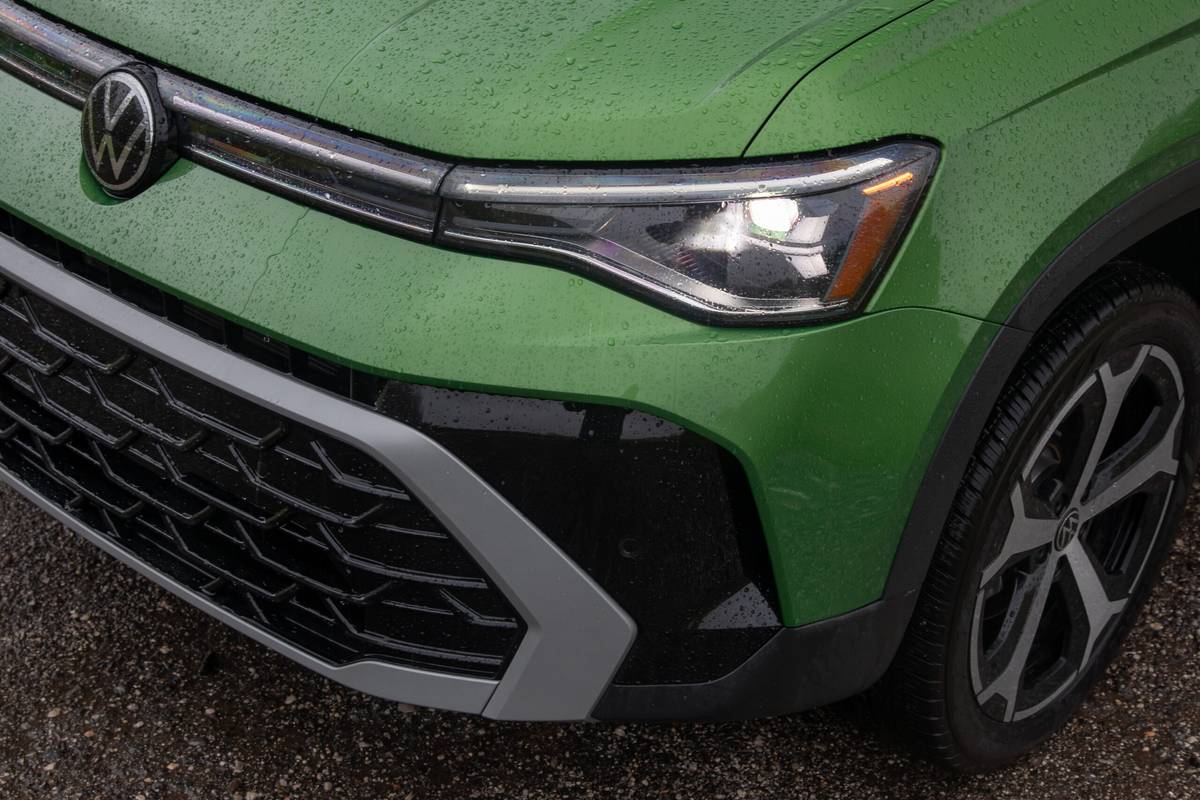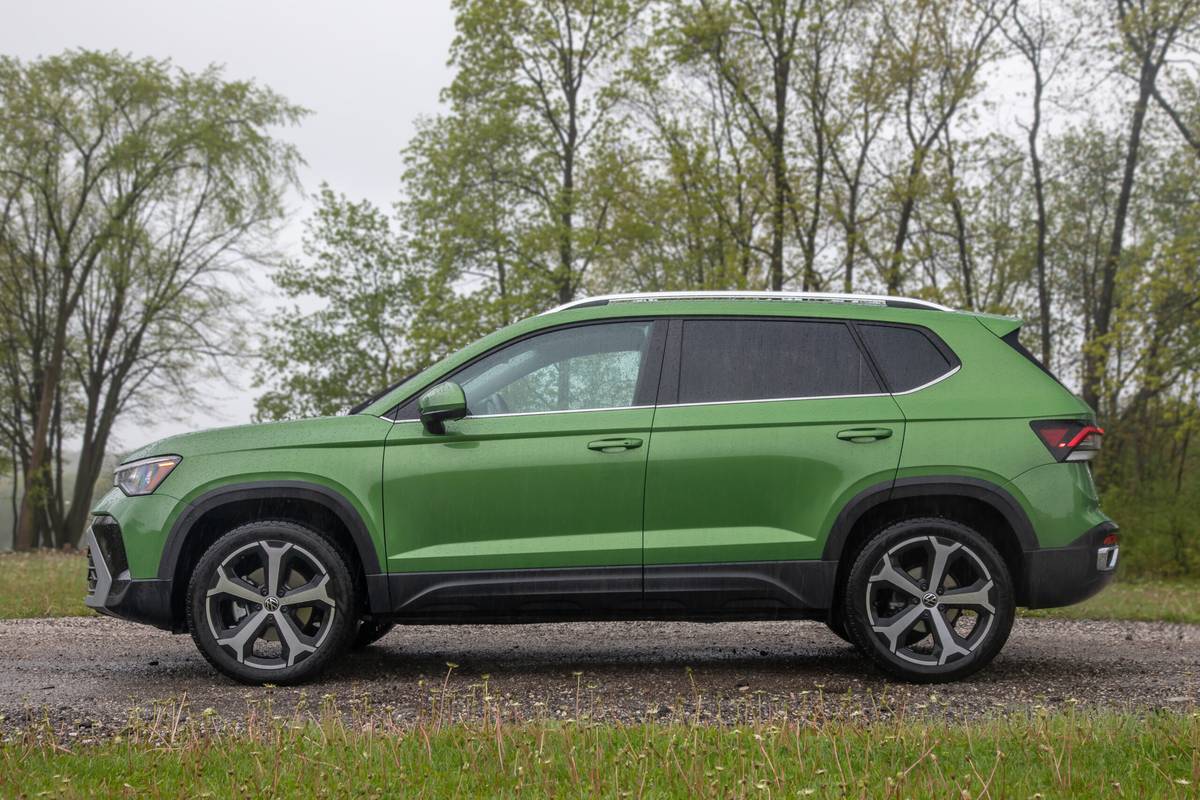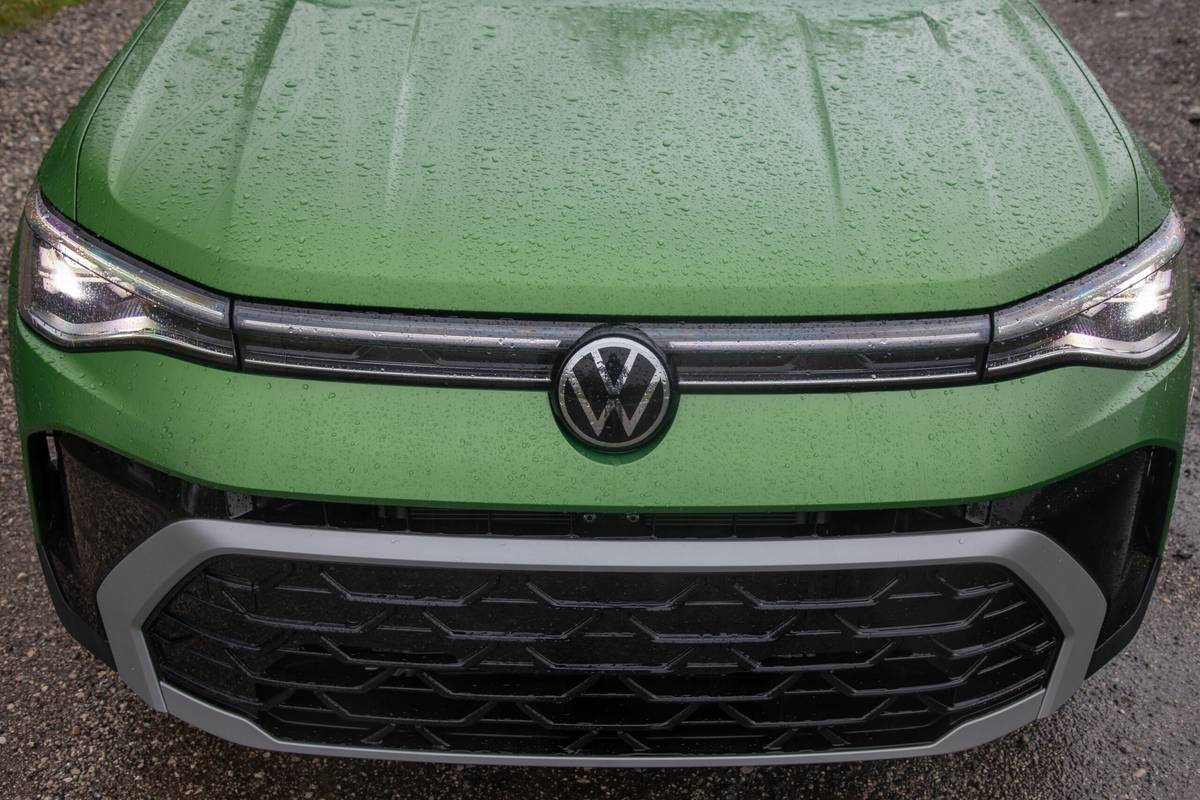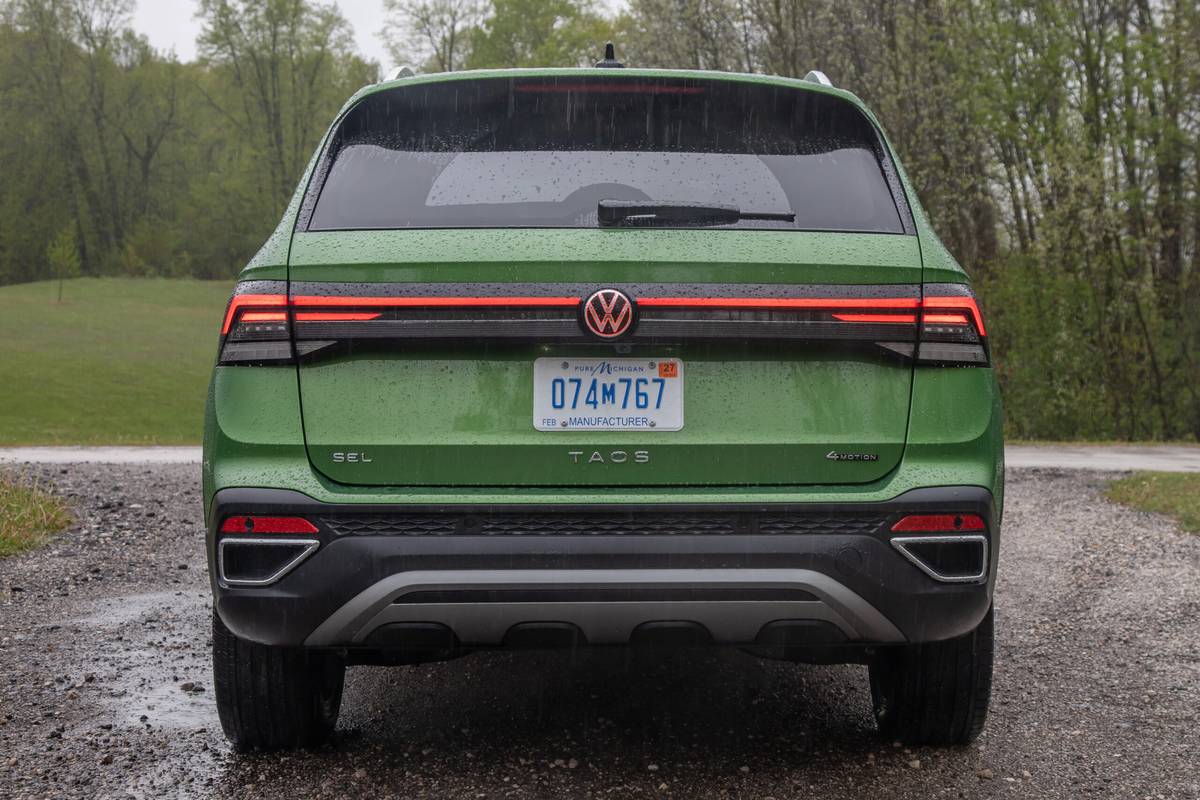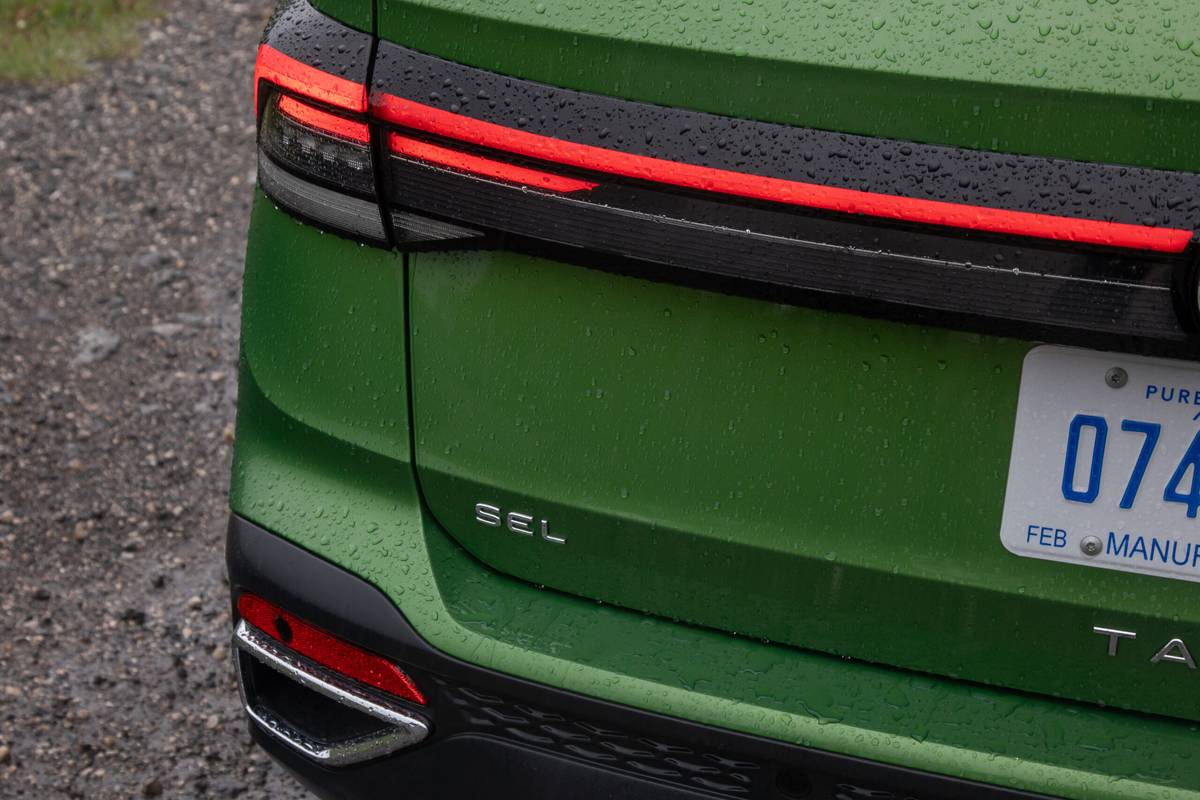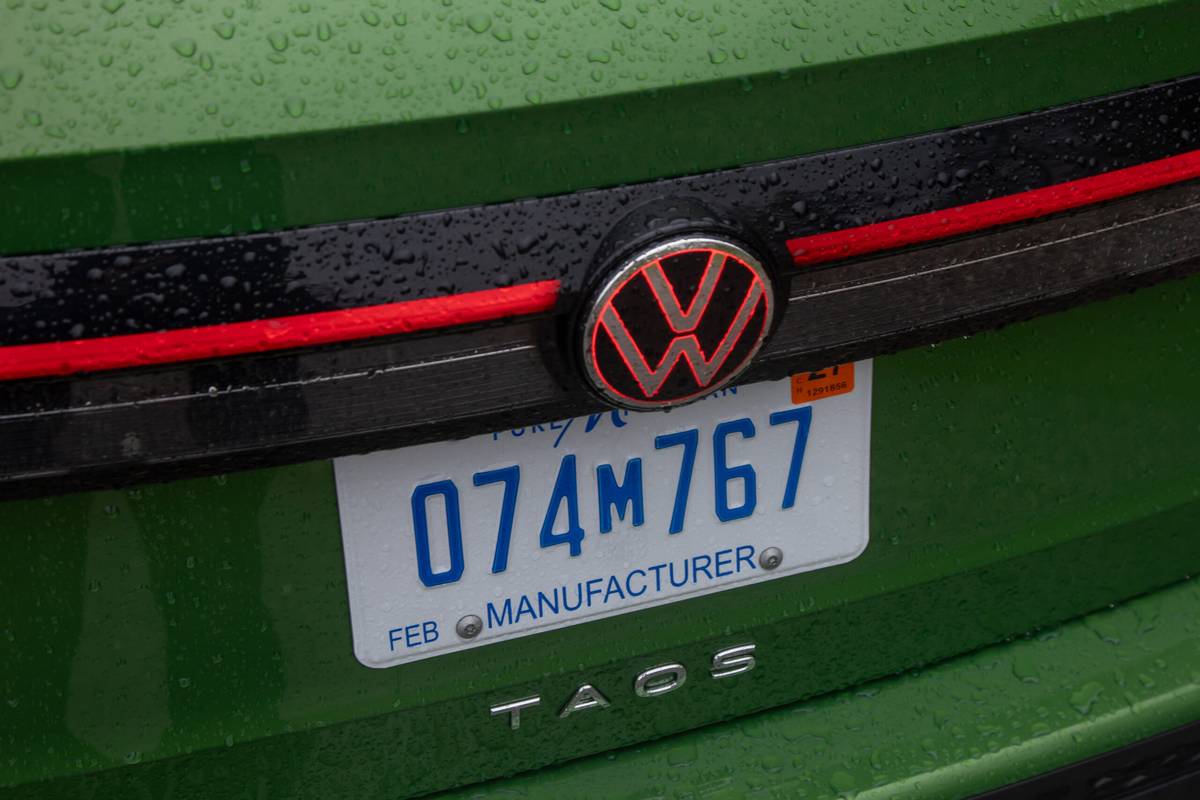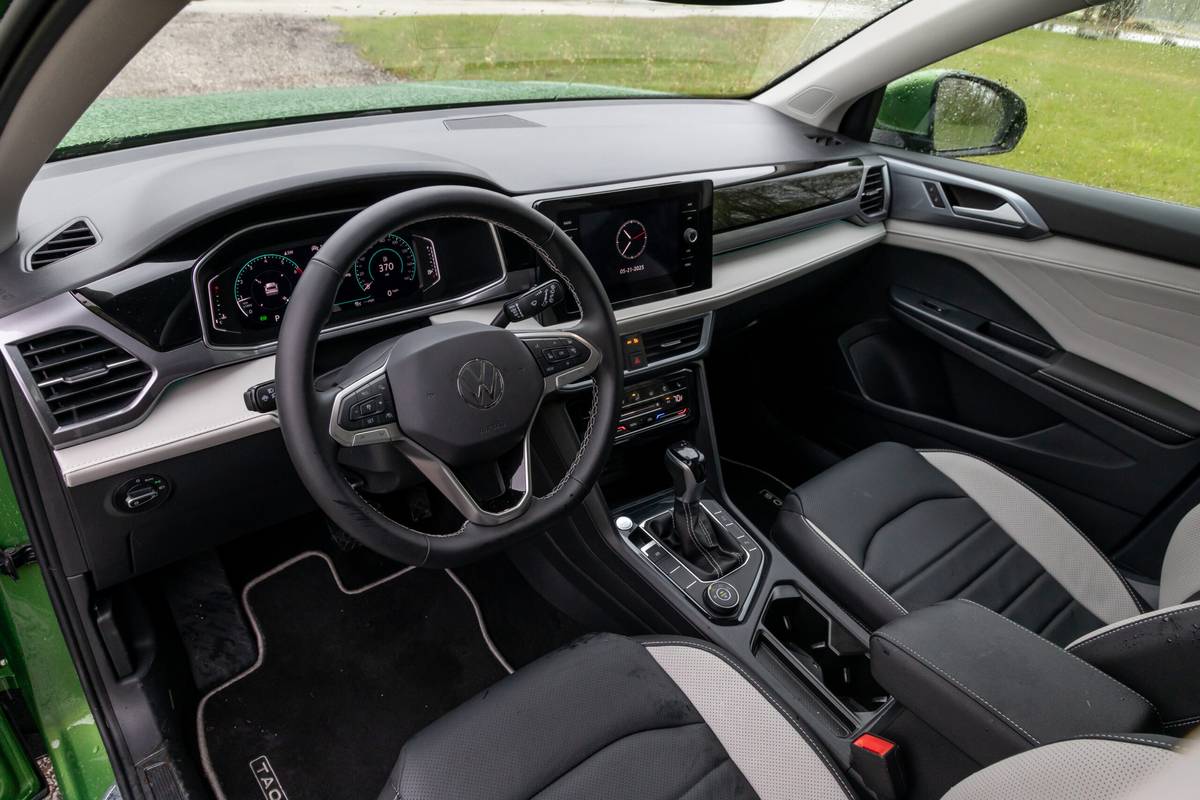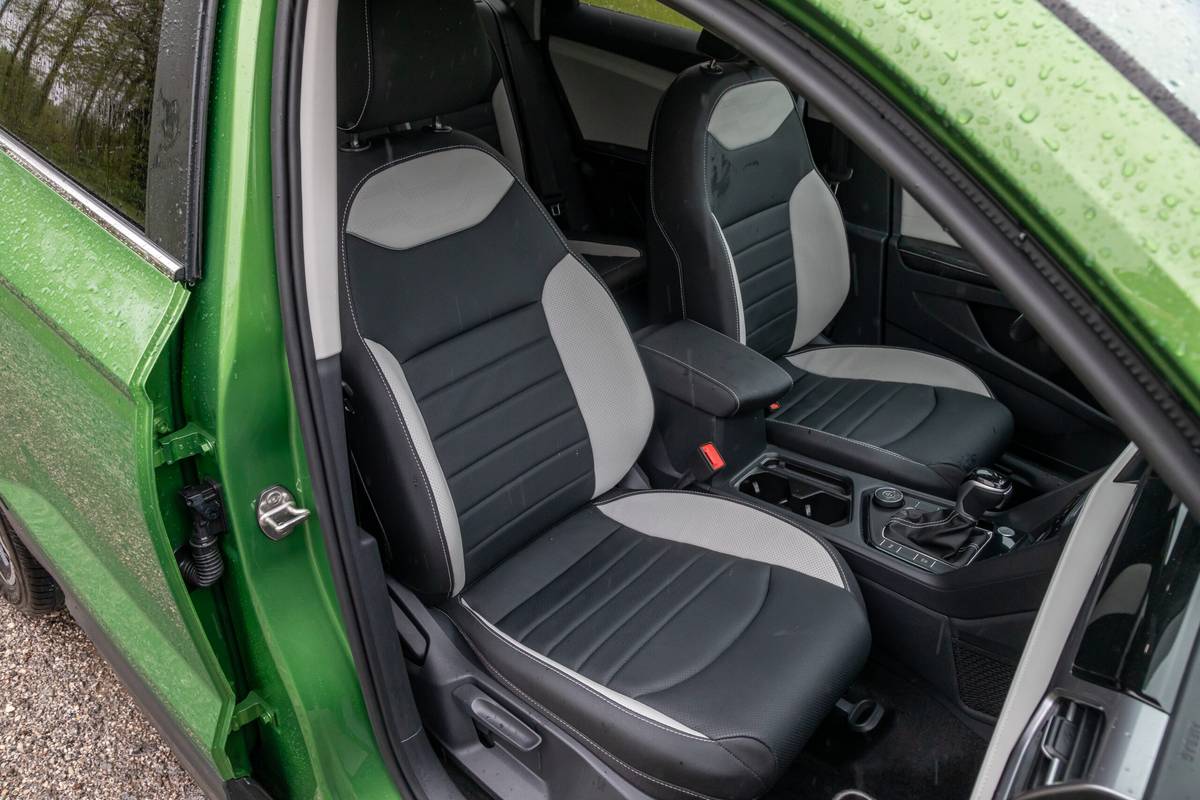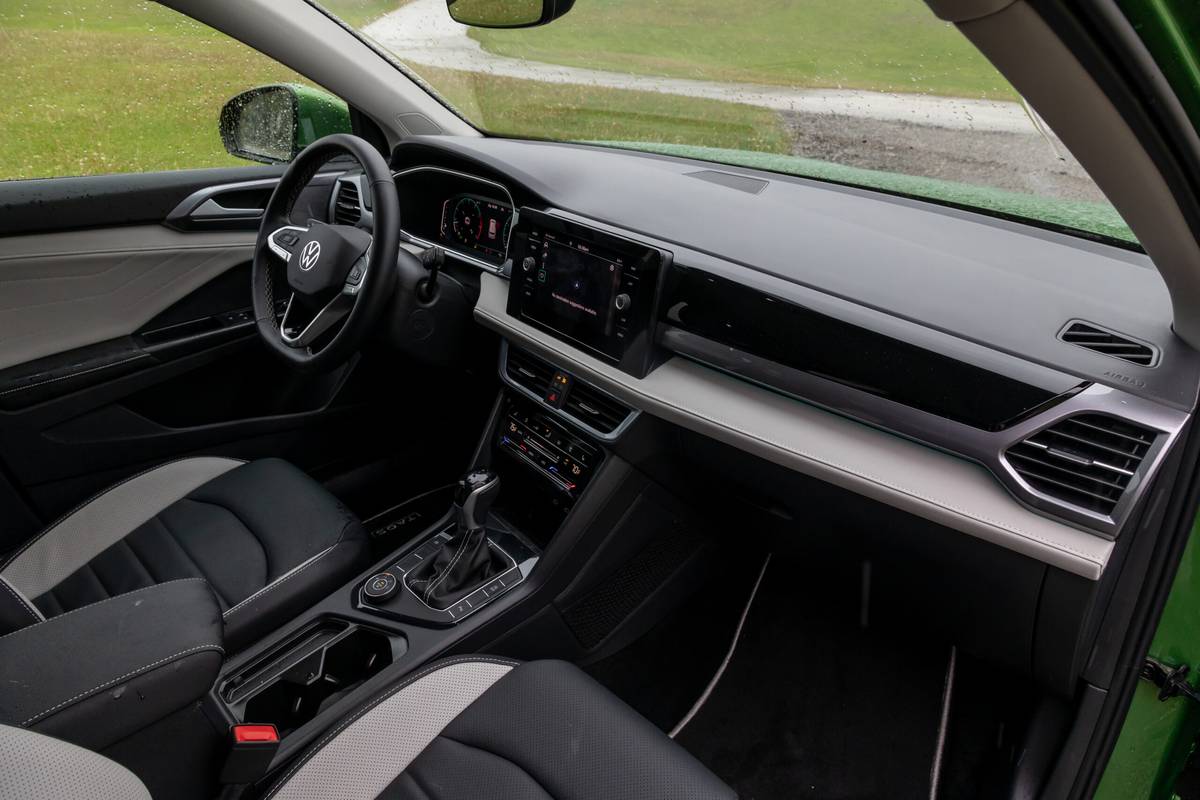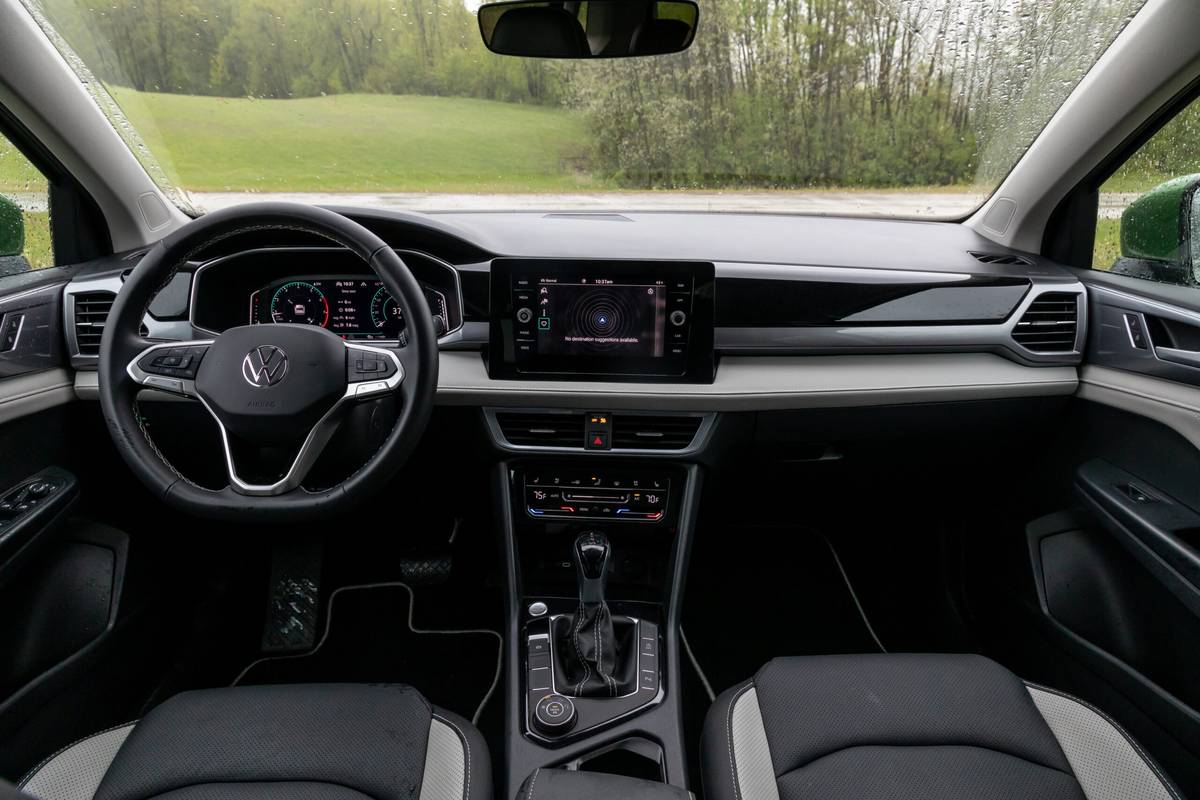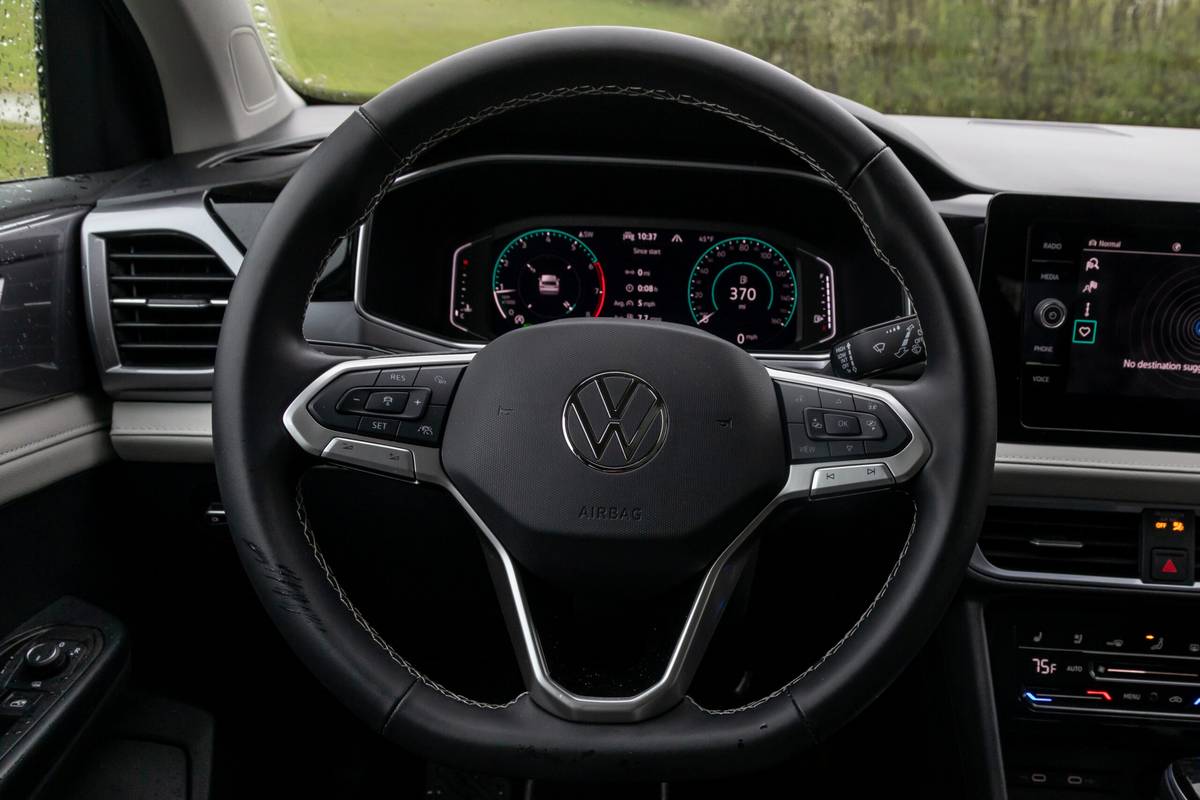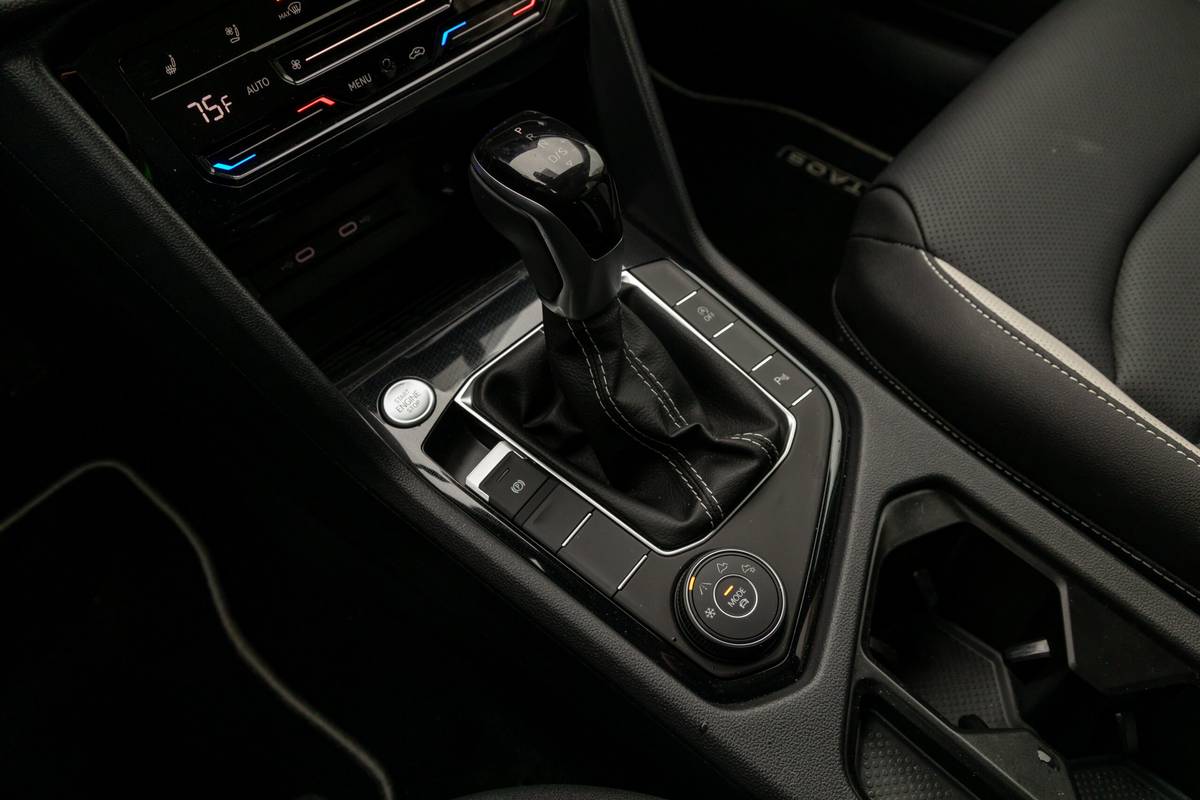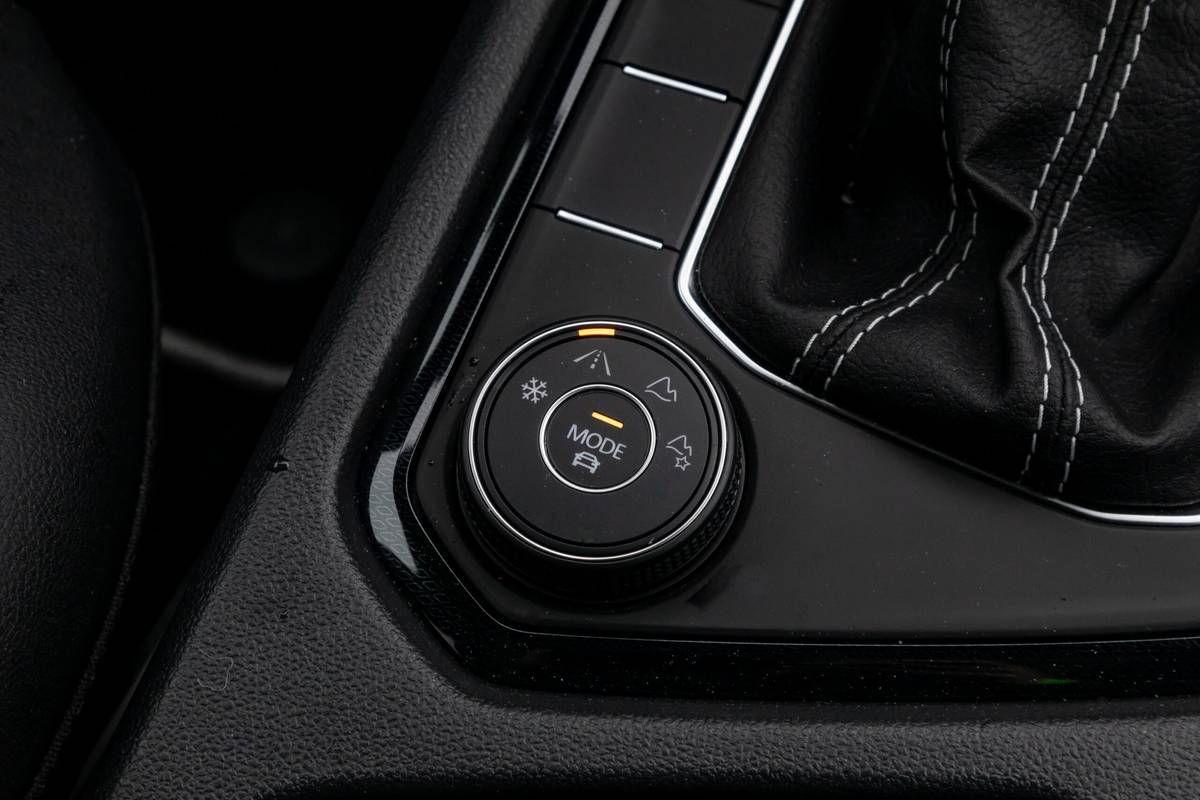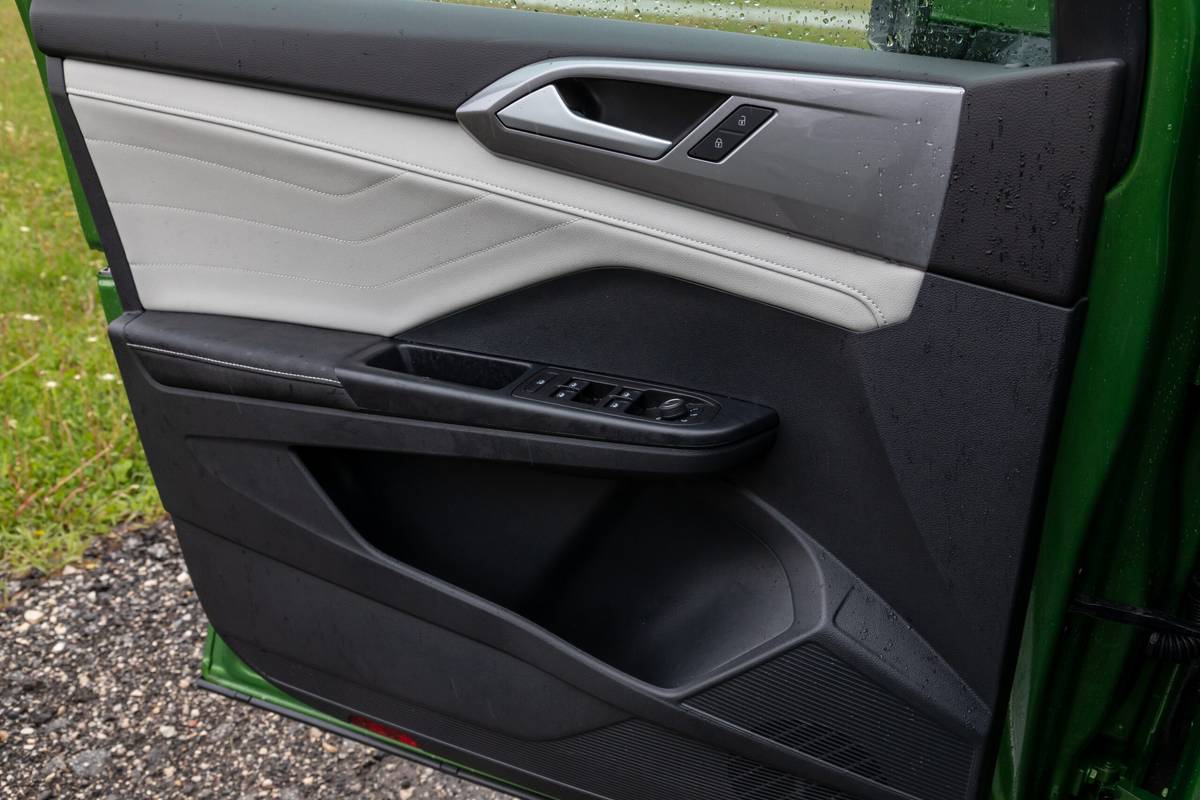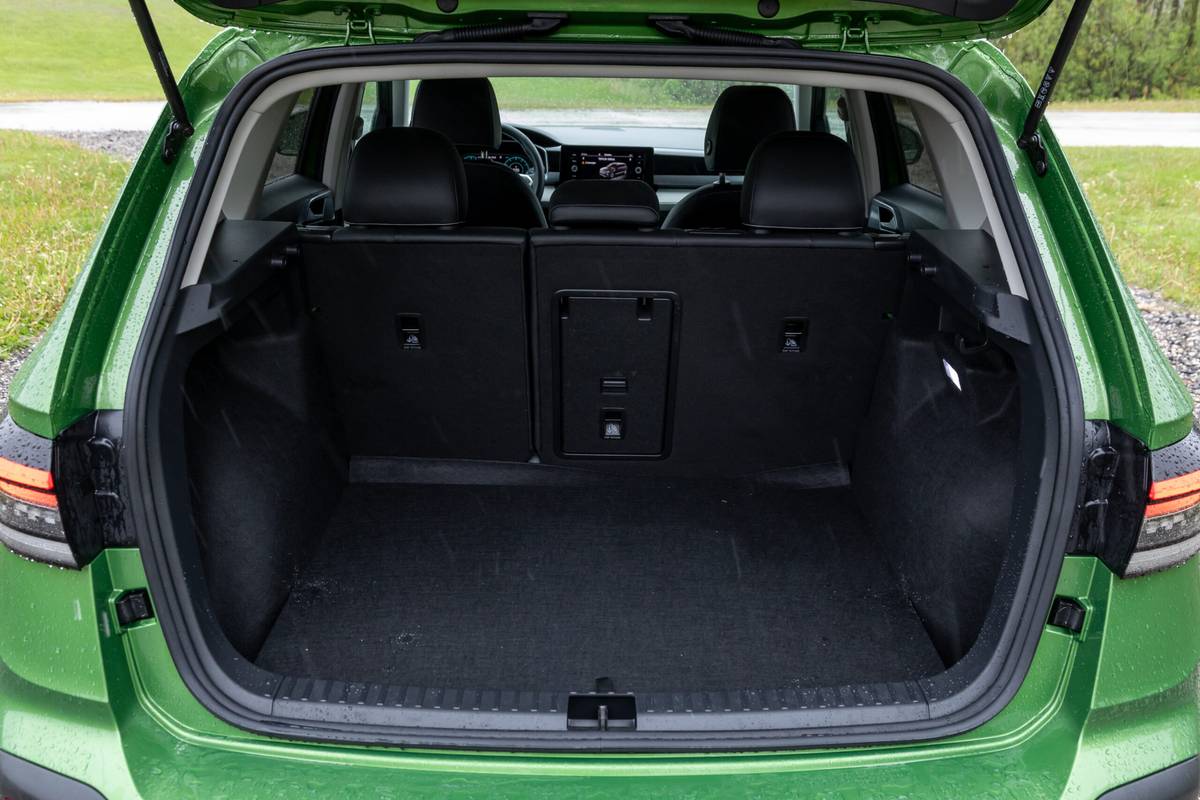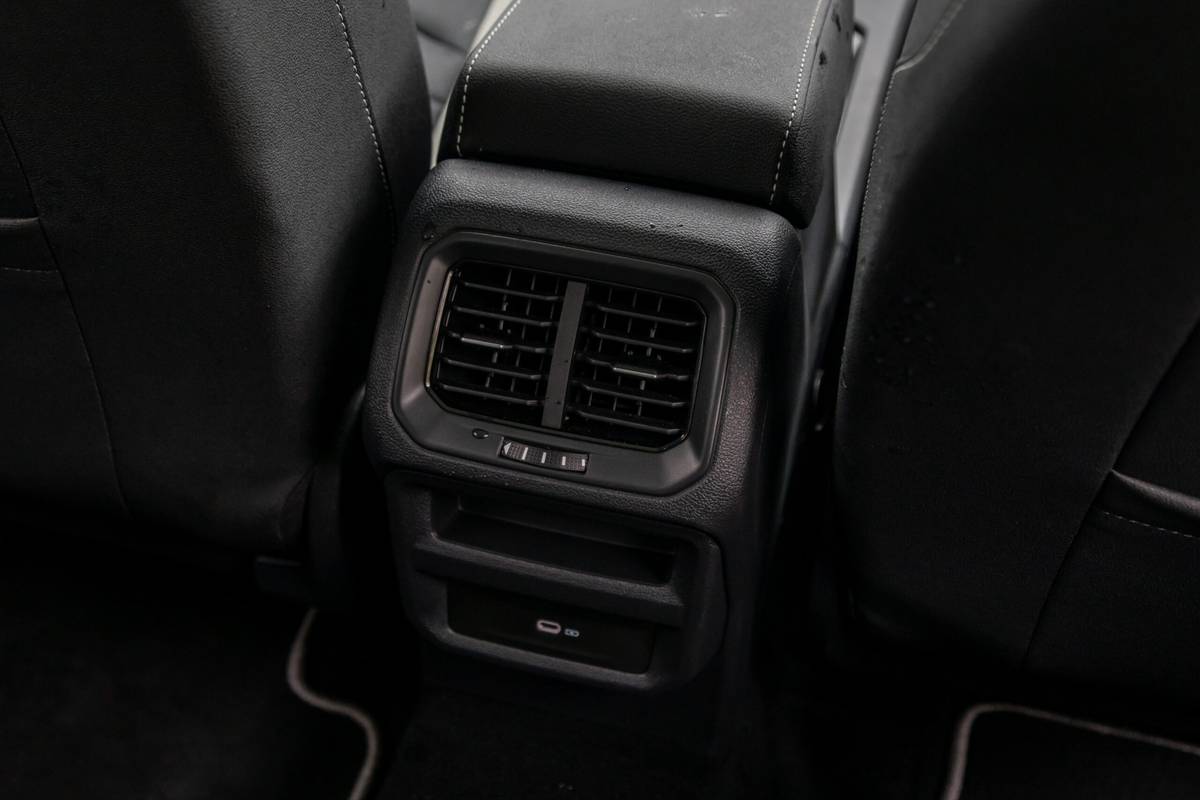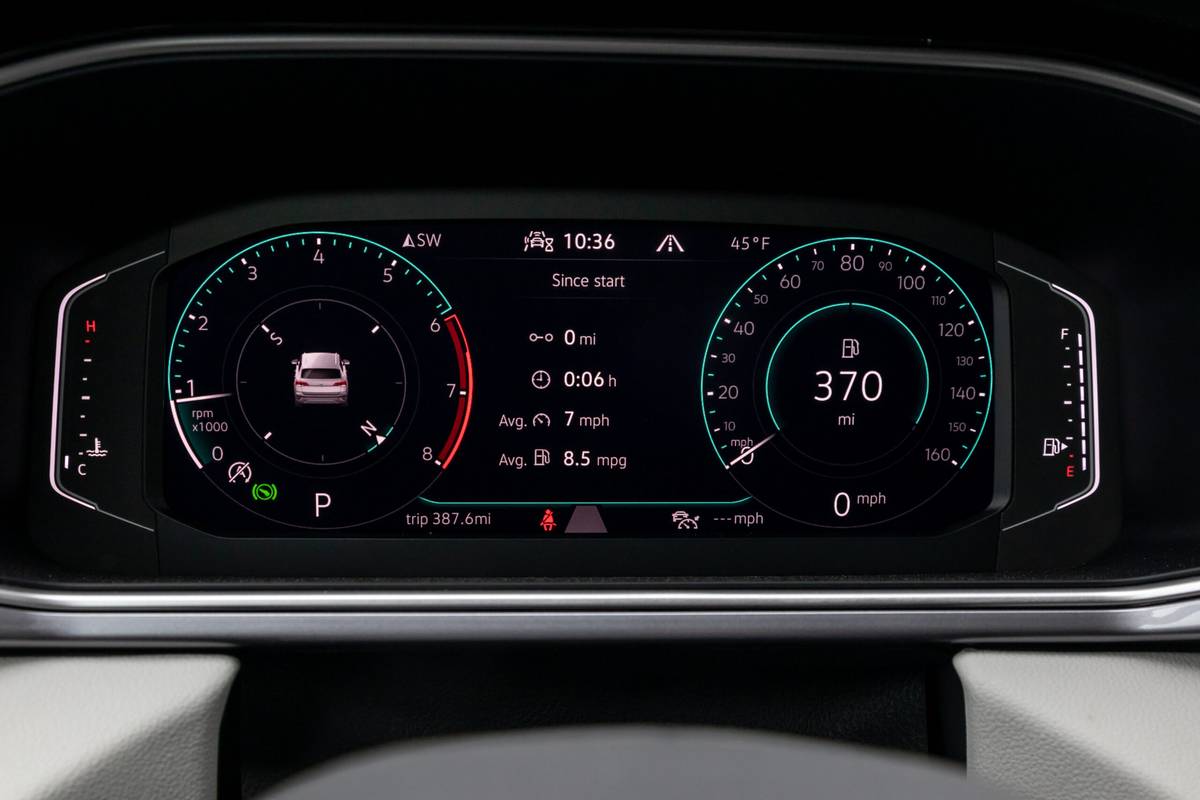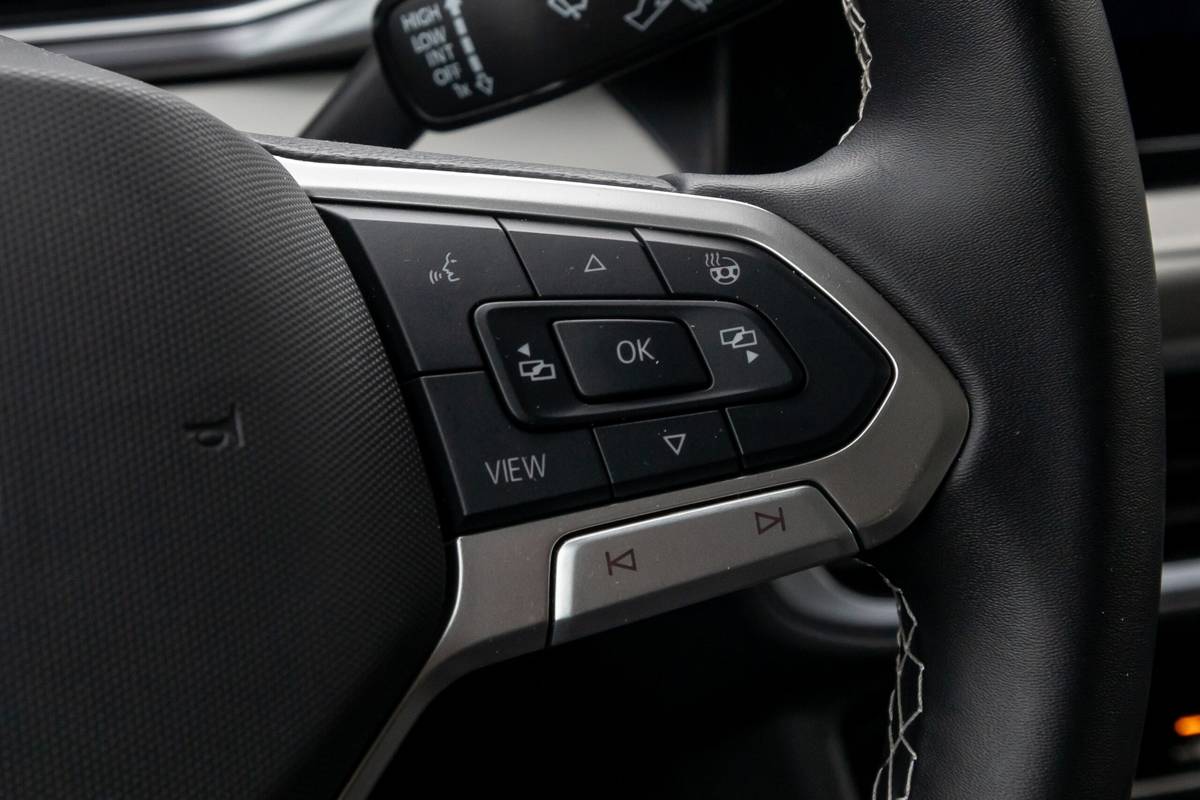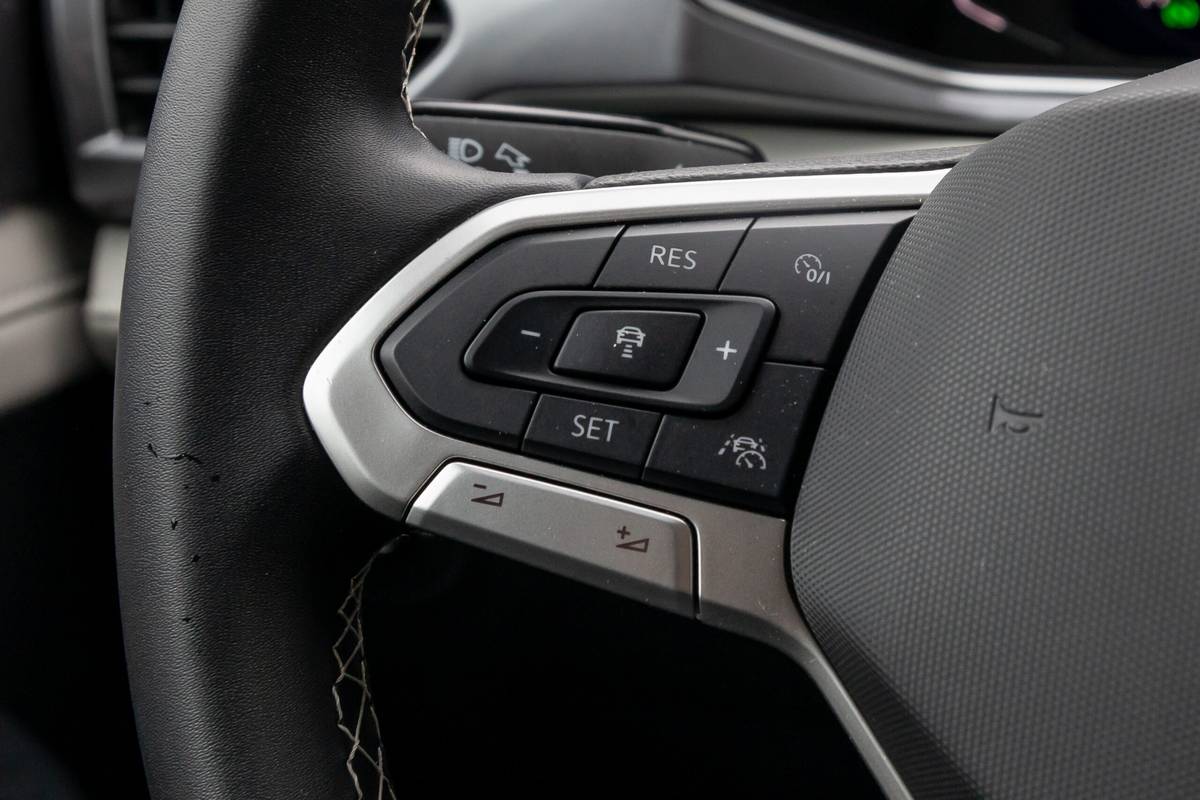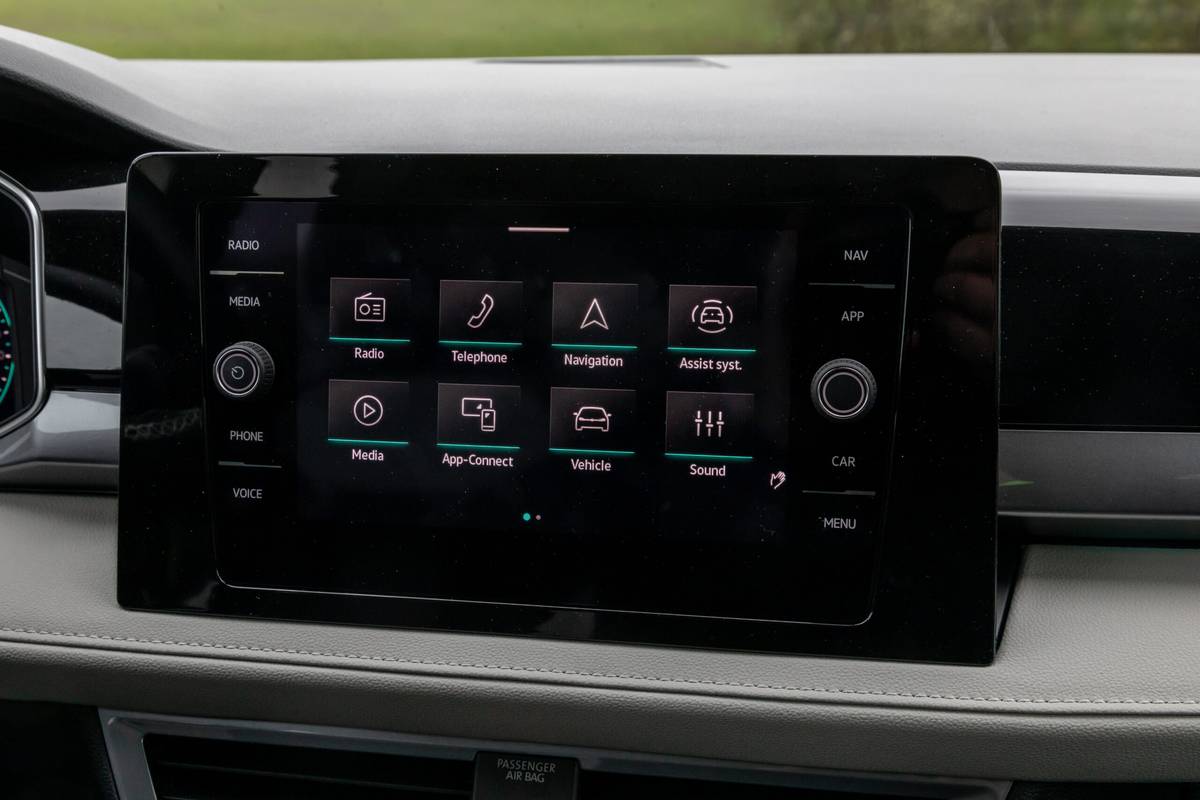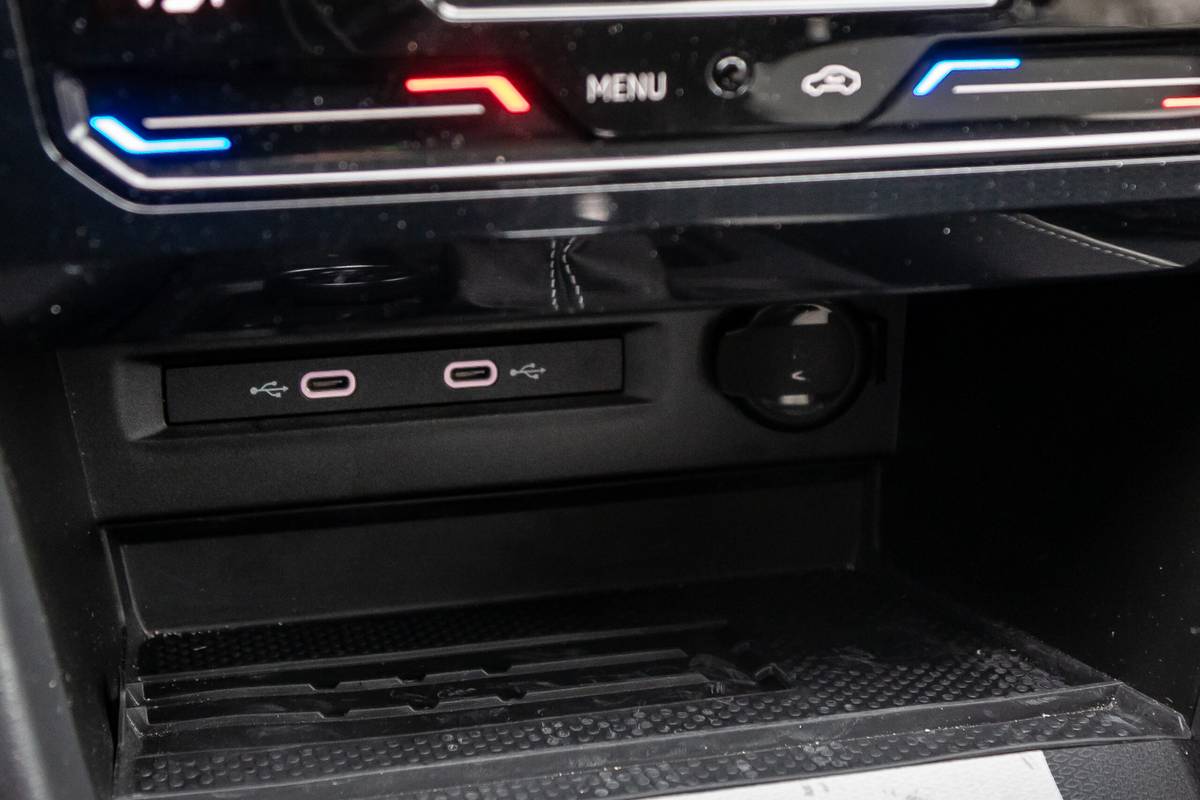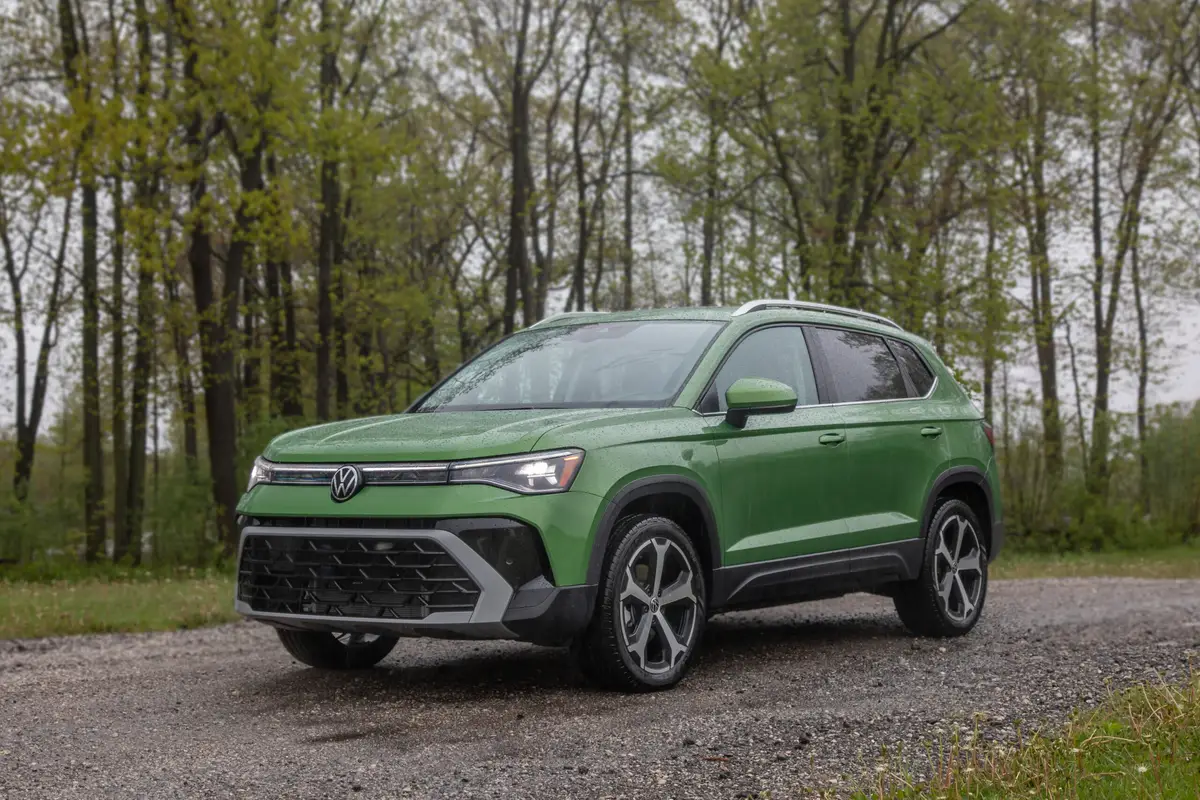
Is the Volkswagen Taos a Good SUV?
- Very well equipped and reasonably priced — with solid driving dynamics, excellent onboard tech and more space than you’d expect inside — the updated 2025 Volkswagen Taos is a winner.
How Does the Volkswagen Taos Compare With Other Small SUVs?
- The Taos’ copious interior space and punchy driving dynamics set it apart in a crowded field, and given its reasonable price when fully loaded, it competes well in every metric, from fuel economy to value to utility. This is definitely one to put on your list if you’re shopping for a subcompact SUV.
As the average price of a new car creeps up and up, automakers’ entry-level offerings are becoming even more important. Is it still possible to get a solid new vehicle at a value price, or are things at the cheaper (though still not cheap) end of the showroom no good? With its heavily updated 2025 Taos, Volkswagen makes the case that you don’t have to spend a huge amount of money to get something stylish, high-quality and genuinely useful. With a bump in power for its tiny turbo engine, a new interior, freshened exterior styling and a seemingly magical interior layout that’s bigger than you’d expect on the inside, the 2025 Taos is a strong contender in a crowded field.
Related: 2025 Volkswagen Taos Packs More Power, Smoother Shifts
How Much Does the 2025 Volkswagen Taos Cost?
There are four trim levels to choose from with the Mexico-built Taos. Like most modern automakers, VW largely bundles available features into trim level instead of offering them as stand-alone choices. Front-wheel drive is standard on all but the top SEL trim, which has all-wheel drive as standard equipment (all prices include a destination fee of $1,425).
- S FWD: $26,420
- S AWD: $28,120
- SE FWD: $29,320
- SE AWD: $31,020
- SE Black FWD: $31,570
- SE Black AWD: $33,270
- SEL AWD: $36,120
Styling changes a bit with each trim level, with the Black models obviously getting blacked-out trim. Two-tone paint is an option on the SE Black trim, as well, and wheel sizes range from 17 to 19 inches, trim depending. Only one engine is offered: a turbocharged 1.5-liter four-cylinder making 174 horsepower and 184 pounds-feet of torque; that’s a bump from the 158 hp of the 2024 Taos, though torque is unchanged. Both FWD and AWD versions of the 2025 Taos use an eight-speed automatic transmission, which is also a change from before; the AWD powertrain previously used a seven-speed dual-clutch automatic.
Style and Packaging
The looks department was never one of the Taos’ problem areas, and the new one doesn’t suffer from any visual weirdness or awkward lines, either. In fact, as far as SUV designs go, it’s quite handsome, with clean styling that’s been updated nicely, new lights front and rear, some new trim offerings and neat two-tone paint options. LED projector headlights are now standard, adaptive headlights are optional, and the taillights now span the width of the SUV, with an illuminated VW logo at the center. My test vehicle was a completely loaded SEL variant in Moss Green Metallic, a vivid shade of green that looks fantastic. VW isn’t afraid of adding interesting color options to its palette; an available Cornflower Blue hue is also quite a looker.
More impressive than the Taos’ exterior styling changes, though, is the amount of room this thing has on the inside. I’m not sure how VW has done it, but there’s a stunning amount of backseat legroom in particular. There’s enough room inside to make you question whether you really need to upgrade to the larger Tiguan compact SUV; maybe the Taos has enough space to carry family and friends on a regular basis? The front seats are comfortable, if a bit narrow, and the rear bench can accommodate three across thanks to a flat floor and that significant legroom. I’m a big guy, and I can sit behind where I’d position the driver’s seat without my knees touching the front seatback. They’re not even close to it; there’s simply a ton of legroom in the backseat. Headroom, hip room and shoulder room are also plentiful. Volkswagen’s packaging engineers have done a masterful job maximizing interior space within the footprint of a small SUV — even the cargo space is plenty big enough for a couple of large suitcases. That, too, raises the question of whether or not you need to spend more money on the larger Tiguan when this smaller, less expensive (but admittedly less powerful and less feature-packed) Taos will meet a lot of small families’ needs.
Spunky and Quick
I’ve driven other compact SUVs with small turbo four-cylinder engines making similar power numbers (mostly from GM) and come away unimpressed with their performance. The Taos doesn’t suffer a similar fate despite not having much power on paper. Its turbo 1.5-liter four-cylinder engine gets a boost for 2025 to 174 hp, and its eight-speed automatic is well matched to it; the transmission is eager to kick down to boost engine revs and squirt the Taos forward with authority. It’s surprisingly peppy considering its diminutive numbers, and it never feels underpowered, sluggish or slow — even when it’s merging onto a highway and revving its heart out. Multiple drive modes also help, including both a Sport drive mode and a sport-shift mode for the transmission that you engage by pulling down once on the gear selector.
The Taos’ handling is also nicely neutral and balanced, and its ride quality is impressive, as well. It’s not a sports car by any means, but it’s unlikely to ever be driven as such by most owners. As a tight, well-balanced family hauler with a comfortable ride, it excels. Even with the SEL’s large 19-inch wheels — attractive alloy rims wrapped in all-season rubber — nothing about the Taos’ ride was harsh or unpleasant when driving on varying types of pavement.
The Taos’ powertrain gets decent fuel economy, as well. AWD models earn an EPA-estimated 25/33/28 mpg city/highway/combined. Over a long slog from Ann Arbor, Mich., to Elkhart Lake, Wisc., that consisted of both highway driving and stop-and-go Chicago traffic, the Taos netted a calculated 31.5 mpg overall, which is adequate. It’s unfortunate, however, that there’s no hybrid powertrain option for the Taos. While the VW’s estimated gas mileage is similar to conventionally powered competitors like the Honda HR-V and Nissan Kicks, it falls well short of the Toyota Corolla Cross Hybrid’s 42 mpg combined EPA rating.
More From Cars.com:
- 2025 Volkswagen Taos Up Close: Atlas Shrunked
- How Do Car Seats Fit in a 2024 Volkswagen Taos?
- 2023 Affordable SUV Challenge: Which SUV Has the Most Cargo Space?
- 2025 Volkswagen Tiguan Review: A Sensible, Well-Sorted SUV
- Shop for a 2025 Volkswagen Taos Near You
Tech Is Better But Still Needs Improvement
Also new for the 2025 Taos is a standard 8-inch touchscreen across all trims, and it’s still running VW’s problematic multimedia system. It’s not the latest multimedia tech we’ve seen from VW, and that’s honestly a good thing — the newer systems VW has trotted out have been deal killers for a lot of people thanks to clunky functionality, difficult-to-use controls and difficult-to-find features. The Taos uses VW’s last-generation system, and combined with a steering wheel that does not have touch-sensitive controls (it still has regular buttons), it’s superior to the latest interfaces coming from VW globally. The multimedia screen isn’t big (8 inches is the bare minimum these days, and competitors offer bigger and better displays), but with available wireless Apple CarPlay and Android Auto, the system does everything you need it to do either through VW’s native functions or via your phone. And, thankfully, it still has knobs for volume and tuning — no trying to fiddle with touch-sensitive slider controls.
What we’re not such big fans of are the Taos’ touch-sensitive climate controls, which do not feature knobs or buttons but rather sliders on a panel. This is suboptimal, but as touch-sensitive climate controls go, they’re better than most thanks to the VW’s big, brightly lit displays and easy-to-find “buttons.”
An available 10.25-inch digital gauge cluster is also a highlight. It’s reconfigurable to a few different views, including a navigation view that’s nice to have when you want to display something else on the 8-inch multimedia screen. There are a lot of choices when it comes to what information the gauge cluster can display, so you’re sure to find something you want to see. Overall, the Taos’ interior technology is easier to use than a lot of recent Volkswagen offerings, but we worry about what the next-generation vehicle will bring. Here’s hoping VW has gotten the message about its other models’ troublesome tech and takes the feedback to keep the next Taos as easy to use as this one.
Should You Buy a 2025 Volkswagen Taos?
Improvements to the Taos inside and out have turned it from a nice-but-compromised small SUV into one that really does exude welcome refinement both inside and out. The cabin is nicely appointed and feels well made, there’s tons of room, it’s good to drive, and it works well, with genuinely useful technology. It’s also a relative bargain in a world where new-car prices are skyrocketing: The Taos’ entry price of $26,420 is reasonable, but even when fully loaded with every available bell and whistle, my test vehicle came to $36,535 — roughly $12K less than the average price of a new vehicle in the U.S. right now. It’s a reasonable sum for this vehicle that cements the 2025 Taos’ high ranking across many categories, making it worth checking out.
Related Video:
We cannot generate a video preview.
Cars.com’s Editorial department is your source for automotive news and reviews. In line with Cars.com’s long-standing ethics policy, editors and reviewers don’t accept gifts or free trips from automakers. The Editorial department is independent of Cars.com’s advertising, sales and sponsored content departments.




























